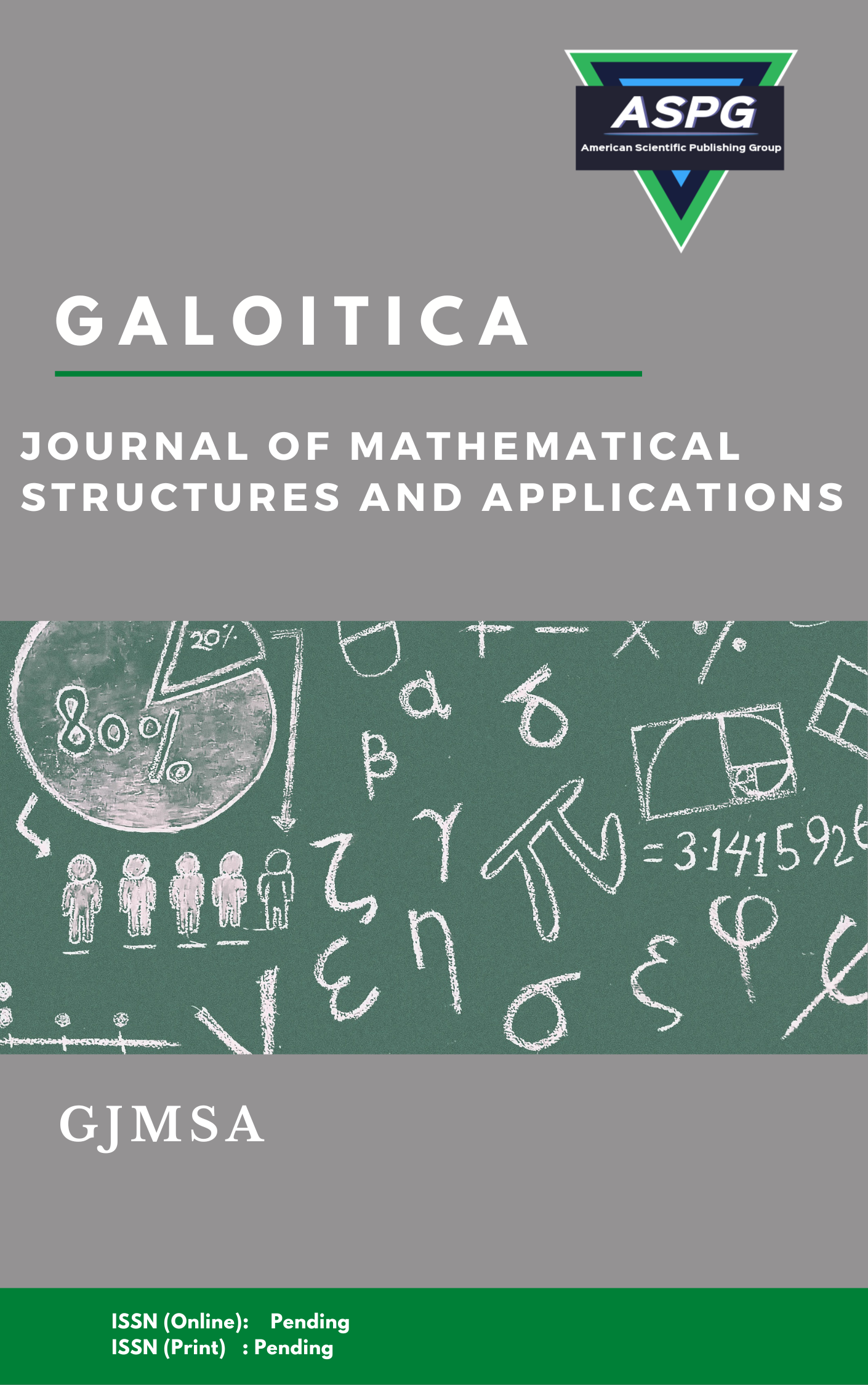

This paper is devoted to defining a new generalization of m-power closed groups by using some special mappings defined on a group (power maps). Also, a new group will be presented according to these mappings which will be related to other algebraic structures.
Read MoreDoi: https://doi.org/10.54216/GJMSA.010102
Vol. 1 Issue. 1 PP. 12-35, (2022)
The objective of this paper is to present a new class of Diophantine equations derived from the group of units problem of n-cyclic refined neutrosophic rings of integers by using homomorphisms between these rings and a finite Cartesian product ring of Z with itself. Also, this work provides many examples about this class and its solvability as a new application of neutrosophic algebraic structures in number theory.
Read MoreDoi: https://doi.org/10.54216/GJMSA.010103
Vol. 1 Issue. 1 PP. 36-41, (2022)
This paper uses the algebraic structure of the group to introduce a novel algebraic game with three players that occurs over finite groups. Also, it analyzes this game over some finite groups with orders up to ten.
Read MoreDoi: https://doi.org/10.54216/GJMSA.010104
Vol. 1 Issue. 1 PP. 42-47, (2022)
The aim of this paper is to solve the “ON MY TURF" game over some finite nonabelian groups. Also, it presents the following results: 1-) If G has odd order, and the set F contains the identity element, then the first player A has a winning strategy. If F does not contain the identity, then B has a winning strategy. 2-) If G has an even order with only one element of order two, there is a winning strategy related to set F. 3-) If G has an even order with only three elements of order two which generate a subgroup isomorphic to Z2 × Z2, there is a winning strategy related to the set F.
Read MoreDoi: https://doi.org/10.54216/GJMSA.010101
Vol. 1 Issue. 1 PP. 08-11, (2022)
The generalizations of abelian groups have been studied widely because of their importance in classification theorem and representation. A group G is called an m-power closed group or (m-group) if and only if it has the following property xm ym=zm ∀x,y ∈ G and for z ∈ G. This paper studies a special case of m-groups, when G is a finite m-group and n-group at the same time with relatively prime integers m and n, which is called a Monic group. It presents the necessary and sufficient conditions for a monic group G to be cyclic, abelian, nilpotent, and solvable by the corresponding property of its power subgroups Gm , Gn. Also, this work introduces three open problems in the theory of finite groups.
Read MoreDoi: https://doi.org/10.54216/GJMSA.010105
Vol. 1 Issue. 1 PP. 48-51, (2022)